20,000 JUMP bikes are dying.
3,000 JUMP 5.5 e-bikes have been saved and are now part of @_SharedMobility‘s “Transportation Library” in New York – a free bike and scooter loaning program unlike any other in history:https://t.co/wuEBwxh2mw
— Bike Share Museum (@bikesharemuseum) July 21, 2020
In our previous article, we stated the JUMP bikes were dead.
But then Lime – the new operators of the JUMP brand, following UBER’s transfer of the company – told us a different story.
Lime very quickly reached out to us on Twitter after our first article debuted on Friday night (May 21st) to correct us, noting that JUMP bikes weren’t going to be retired; rather, that the bikes would return in specific markets.
The very next day, Lime announced the triumphant return of the JUMP to Denver streets:
Here’s some of that news I mentioned! 🚲🚲🚲🚲🚲https://t.co/04pmGbGZqn
— Russell Murphy (@RussMurphNY) May 22, 2020
That’s good news, right?
We wish it was.
Since Friday 5/21, our inbox exploded with stories from JUMP shift leads and head mechanics – contracted employees with no NDAs – with their side of the story, which was very different from Lime’s.
And it’s an interesting story at that.
First off: Yes, bikes are being scrapped – by the containerload. JUMP staff seem to all agree that at least 20,000 are being scrapped, while a Reddit thread alludes to 30,000. (NOTE: The linked article behind the paywall does not give any number).

But, presumably, Lime is not doing the scrapping.
In the eleventh hour of UBER’s $170 million investment in Lime, upper management has issued an directive to round up JUMP e-bikes from throughout the US – many brand-new and never deployed – and scrapping them en-masse.
Heard the decision may lie with @limebike instead of @JUMPbyUber. Maybe someone has a contact that can see value in a better outcome? Keep the message going! #CreateChange #SenselessWaste #BikesForKids 👧👦 pic.twitter.com/TeMIpQ1hi3
— Cris Moffitt (@CrisMoffitt) May 27, 2020
I hear all of you saying “Huh?” out there. Given UBER’s investment in Lime, destroying assets doesn’t make sense, right?
But it does. Oh, it does.
To truly understand this unfolding soap opera, one has to understand the various generations of JUMP bikes. There have been four iterations, but the important ones at the moment are the current “5.5,” – the one with the with the black rubber pad hiding the side mounted battery – and the new “5.8” model.
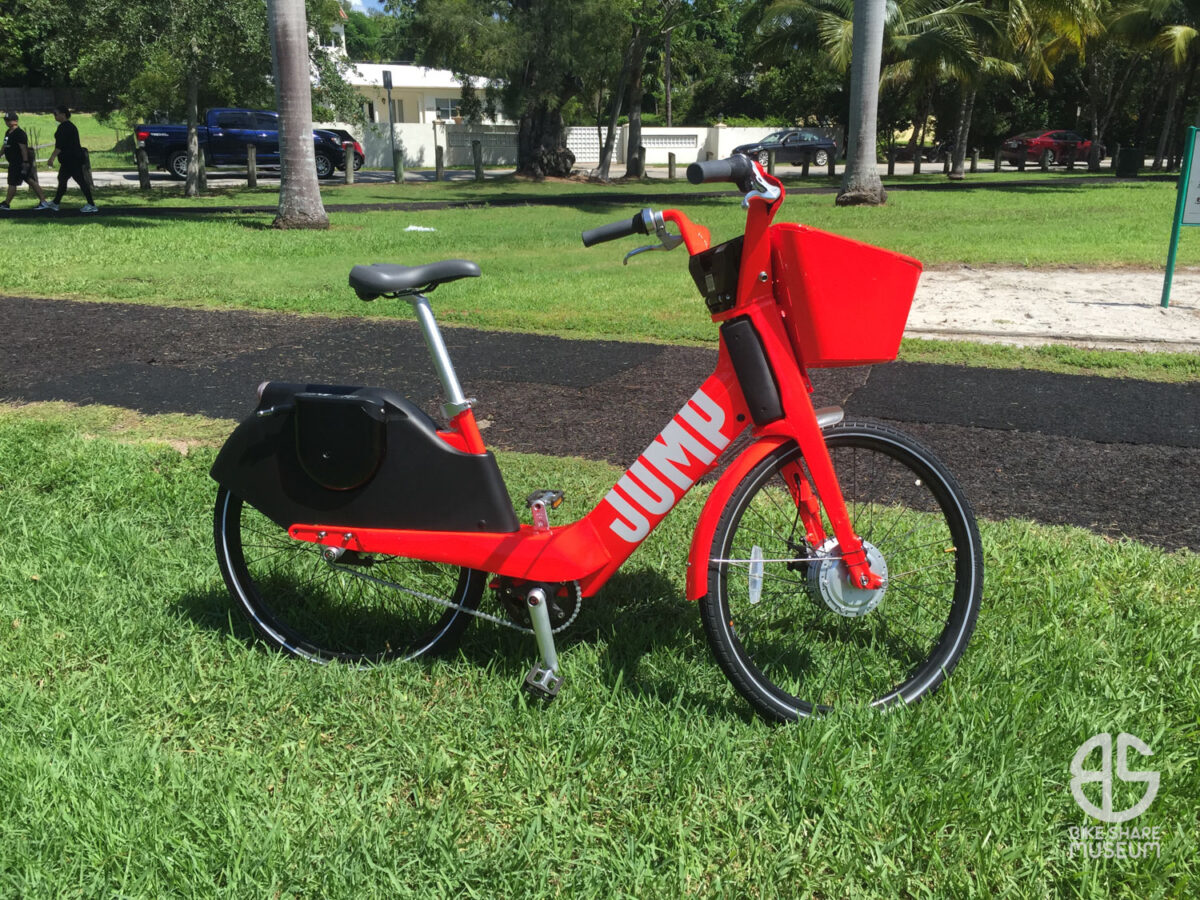
The current 5.5 is the one being scrapped by the containerload. As of 5/27, anywhere from 18 to 30 (depending on the source – see Aaron W. Gordon’s article at Vice) trailers of bicycles have been delivered to Foss Recycling of North Carolina. According to Aaron’s research, the scrapping contract is neither with UBER or Lime, but with Blue Sky Trading, a battery recycler.
‼️RT to MAKE A CHANGE‼️
Hey @JUMPbyUber, why is this happening? TEN semi loads of good bikes🚲trashed⁉️ Let’s collaborate on a non-profit to repaint & repurpose these. Give kids transportation to their first jobs👧👦@Casey want to help?🙏 pic.twitter.com/N8Uv82tr1B— Cris Moffitt (@CrisMoffitt) May 22, 2020
Now on to the latest model of the bike, the 5.8. Or rather, the latest beta version of it: The 5.8 is experimental. It has a downtube-mounted kiosk battery that’s shared with the latest scooter prototype:
New JUMP bikes with swappable batteries and battery kiosks. JUMP CEO Ryan Rzepecki told me the kiosks will be strategically placed near residences and businesses. pic.twitter.com/gCQEVBFclz
— mrd (@meganrosedickey) September 26, 2019
The catch is that the JUMP engineers who designed the 5.8 were never able to get the system to work just right. But that’d be easy for Lime to finish building upon, right?
Wrong.
UBER fired every last JUMP engineer that designed the bike’s firmware.
See what we’re driving at?
While UBER was handing over $170 million to patch a hole in their colleague’s ship, they were busy cutting another hole in the hull. They’ve left Lime with basically two bike-related assets: A relative pittance of the original 5.5 model, and the unproven JUMP 5.8…without an owner’s manual.
A JUMP staffer who preferred to remain nameless put it best:
“UBER created us – and a fascinating potential for alternative transportation. Now, [because of COVID19], when this sort of transportation is needed most, they’re kicking everyone to the street, destroying every bike they can, and slowly taking Lime down in the process.”
And that, friends, is the story. Or at least what’s transpired so far, right down to the eBay listing for the wheels harvested by the scrappers:
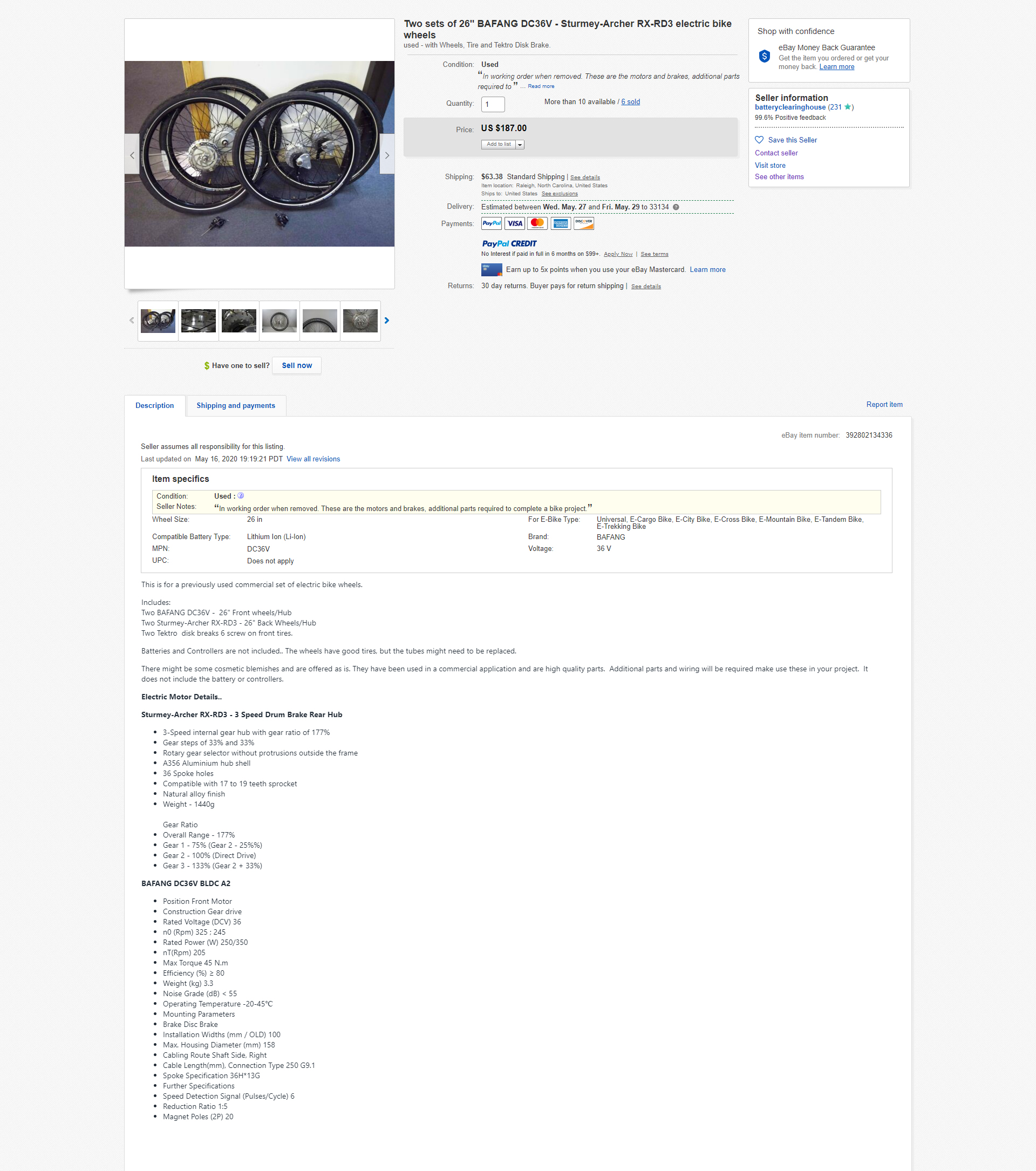
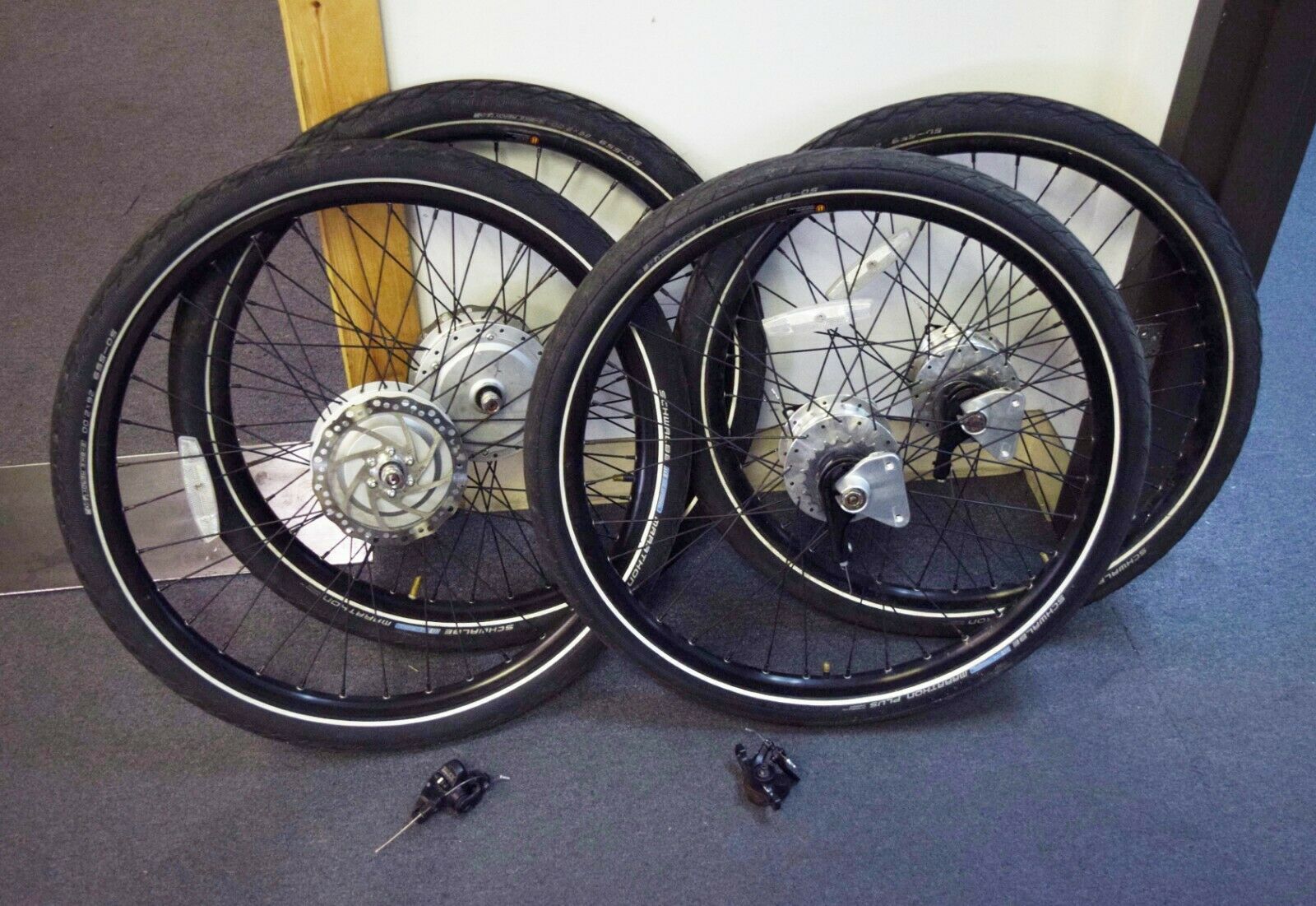

We can’t emphasize enough how disgusting it is for UBER to scrap 20,000 bicycles in the midst of an unprecedented pandemic where bicycles have literally become an object of survival. Heavy as they are, these could be transportation for the many who have been brought to financial ruin during COVID-19.
And before anyone brings up the liability angle, remember this:
The Li-Ion problem can be solved by removing the pop-out 36V battery pack (while not user swappable, the 5.5’s battery pops out from the side with a small key). This allows for responsible cell recovery and eliminates the additional risks of a motorized bicycle. As for association with UBER, a strip of automotive vinyl over the existing branding would solve that problem – and as we learned from Broward B-Cycle, an entire bicycle can get vinyl wrapped in a different color (with 32 different panels!) and never reveal their original paint underneath.

But no. Nobody, but nobody gets a JUMP…except everyone who’s ever found one unlocked and left for trash on our streets. And somehow, that’s not an issue.
What’s our take?
The JUMP bike is still dead – even if it exists for now, in certain markets – while Lime is going to be left trying to figure out how to plug the wires back together.
It’s a sad prelude to a messy ending.
UPDATE – According to Aaron Gordon, Senior Writer at Vice, the commotion on social media resulted in a reversal of the scrapping program. “Multiple sources told Motherboard that, in total, they saved 5,298 bikes.”
UPDATE #2: 3,000 of the 5,298 are becoming part of shared “community-led hubs that loan out bikes, e-bikes and scooters” in Western New York via Shared Mobility Inc.
The Bike Share Museum is proud to announce the official preservation of five JUMP bicycles in the Bike Share Museum! Story below. #TheJUMP5https://t.co/jGpaVzuJ6r
— Bike Share Museum (@bikesharemuseum) June 14, 2020


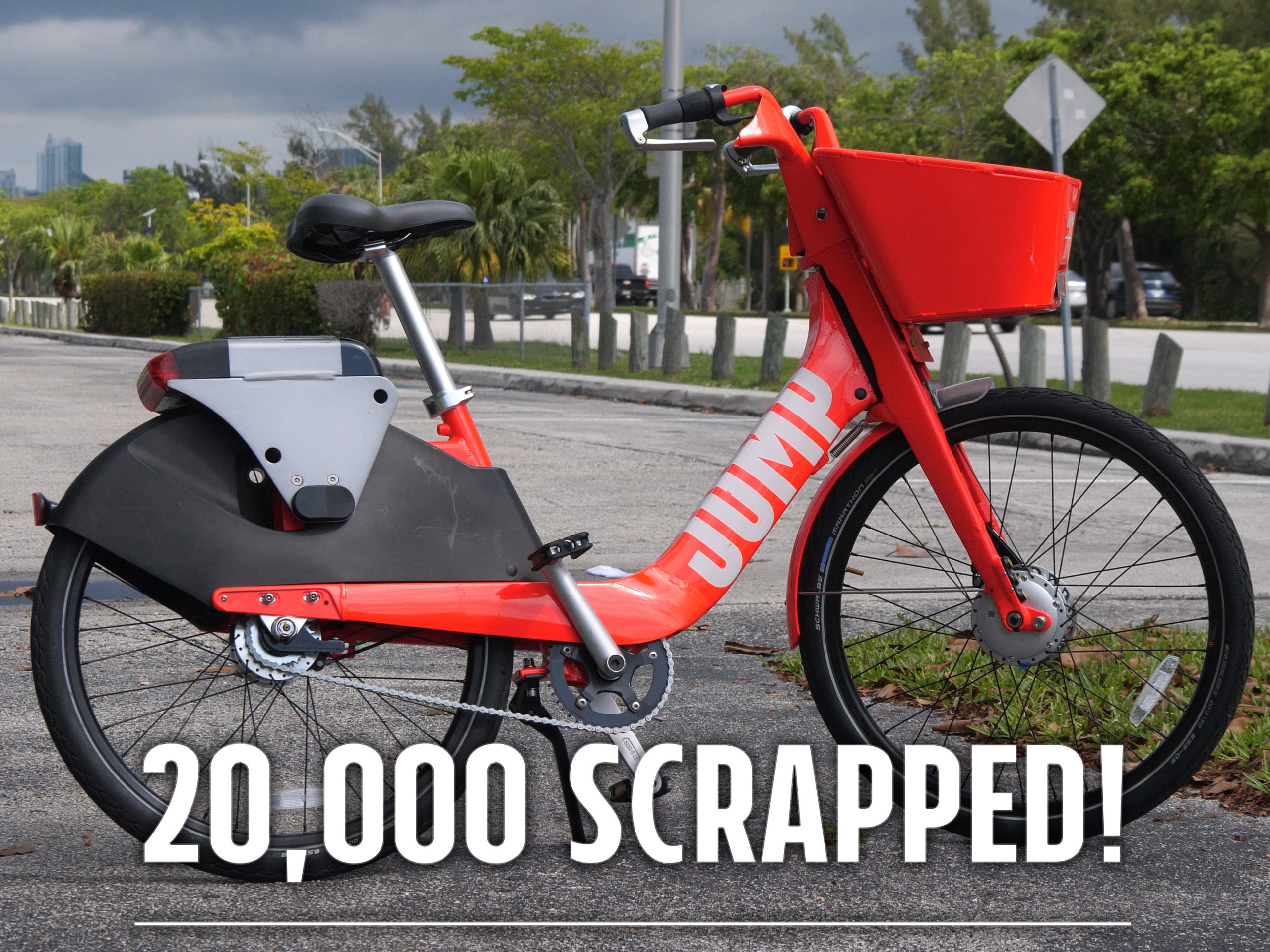
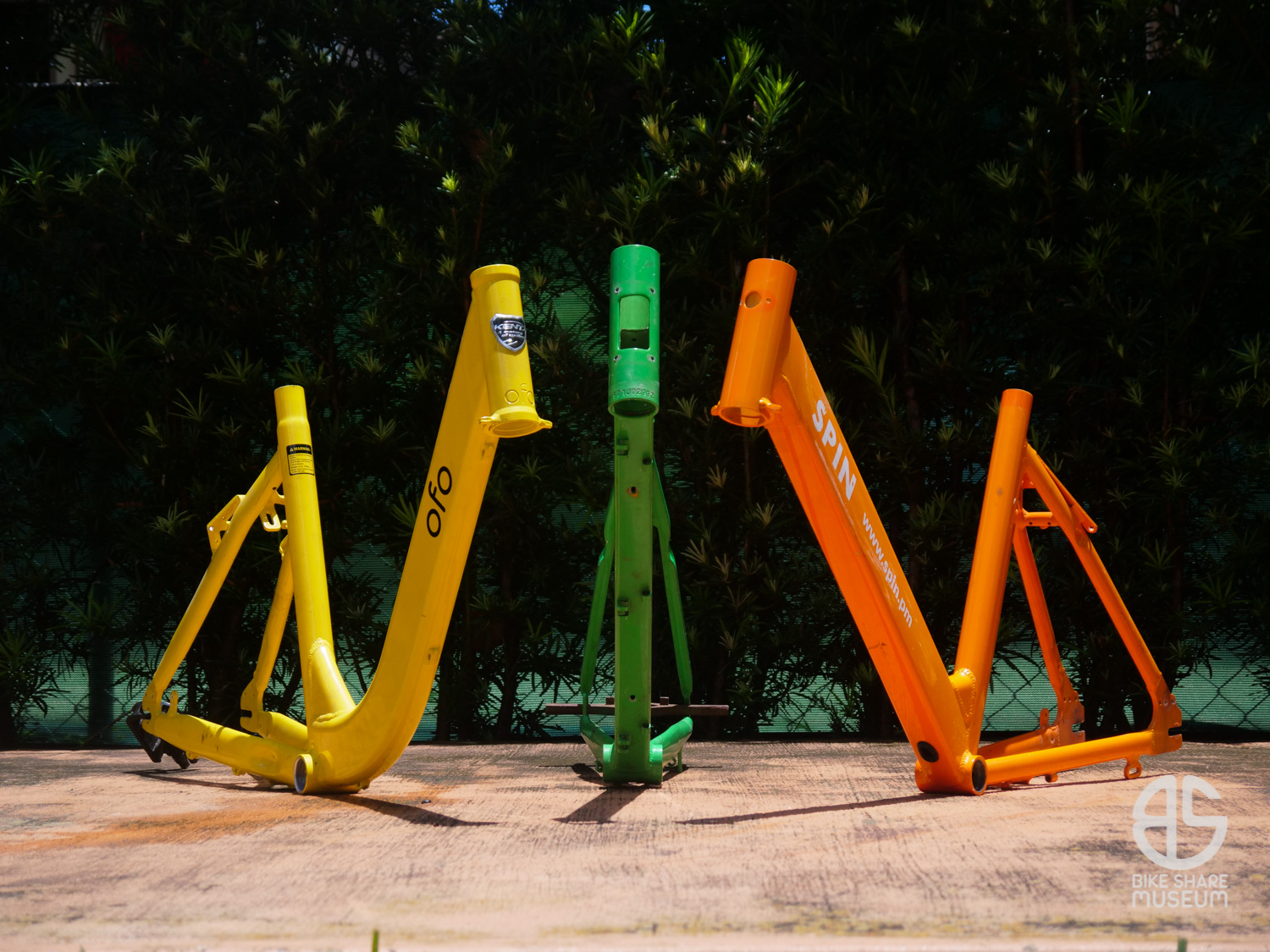

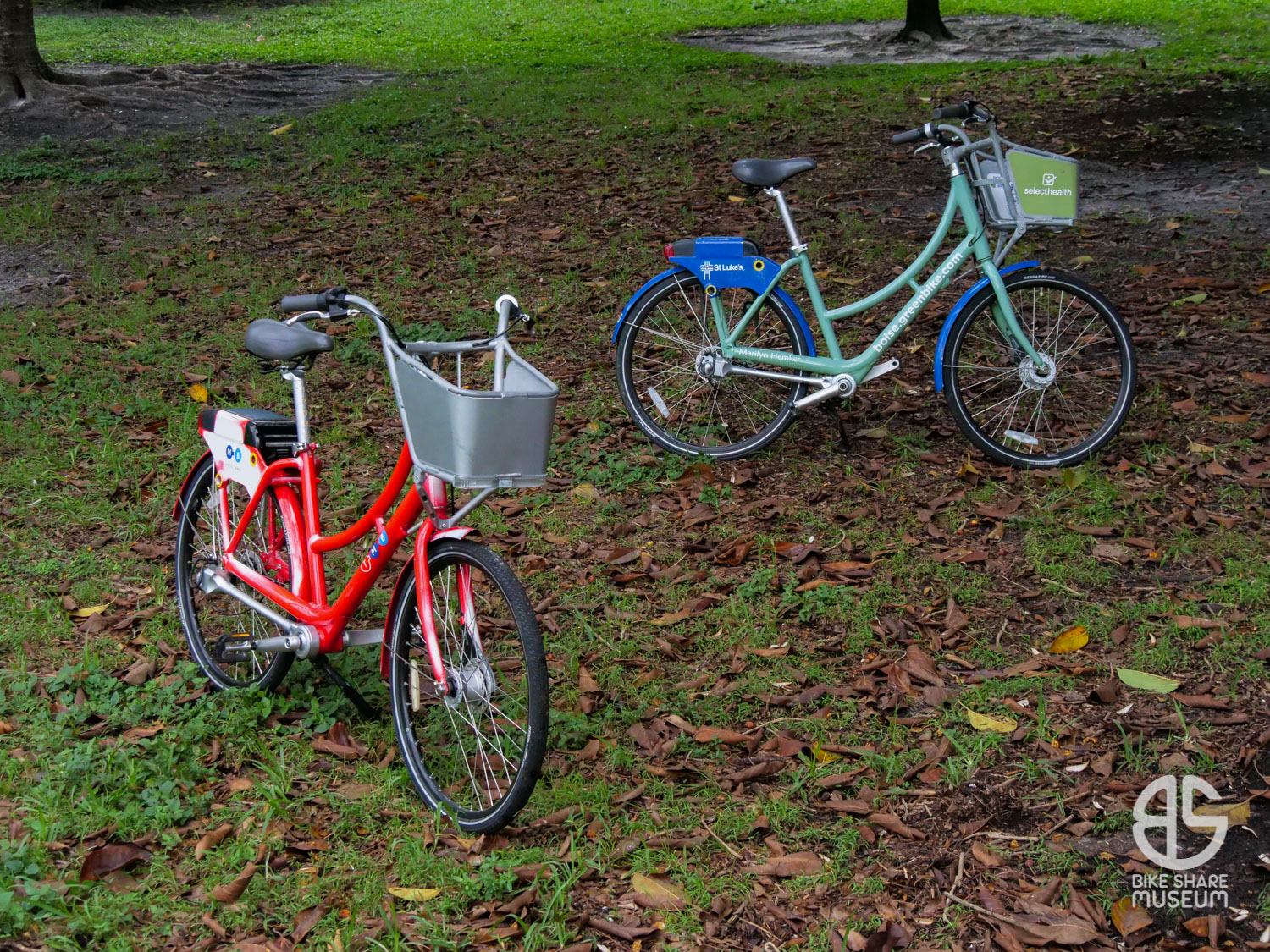
I have no words for this, my mind is blown.
How can we save them from scrapyard ?